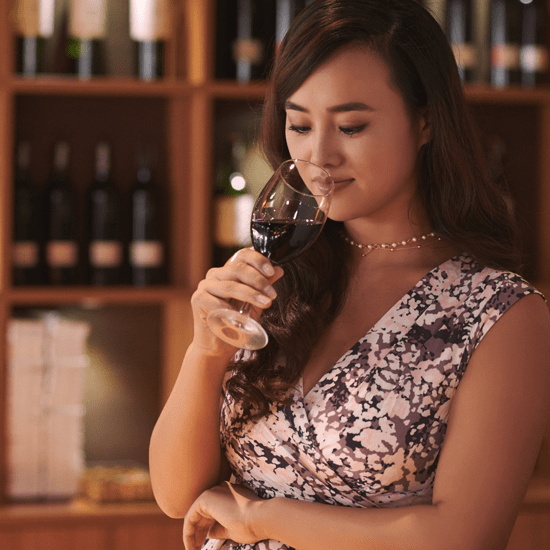
While 1 in 3 Americans are wine drinkers a good number of those — along with the two-thirds of people who don’t drink — have a tough time knowing how to choose a good one. And for good reason: there isn’t just an endless selection of wines, for many, wine tasting is viewed as a bit pretentious and mysterious.
However, like art, it’s really less about what you’re supposed to like and more about what you actually enjoy.
Here are a few tips to help you choose wine you’ll love:
What’s your flavor?
All wine flavors are a balance between sweet, sour, and bitter.
Sweetness results from the amount of residual sugar from the winemaking process. Most beginner wine drinkers like a bit of sweetness. Drier wines have less sweetness. The longer the grape juice is left to ferment, the greater the amount of alcohol results. Higher sweetness and alcohol give perception of fuller body. Snobs may prefer only dry wines, but they would miss out on fantastic wines such as Riesling from Germany, Tokaji Aszú from Hungary, or Icewine from upstate New York and Canada.
Sourness relates to the amount of acidity in a wine. The higher the acidity, the more sourness you’ll perceive. This is not a negative characteristic. Chablis made from Chardonnay grapes in northern Burgundy has higher acidity, and it’s this zesty, fresh quality that wine lovers value. Acidity helps balance the sweetness in wine. A sweeter wine with low acidity may taste very flat and flabby, and vice versa.
Bitterness derives from tannins, a naturally occurring bitter flavor found in fruit skins and seeds. Most white wines have low amounts of tannin as white grapes have low tannins. Rosé wines can have more depending on how long the grape juice macerates with the grape skins. Red wines get its color from the skins and tend to have more tannin. Tannins help preserve wine and soften with ageing. Not all red wines are highly tannic. Wines such as Barbera, Pinot Noir, and Gamay has less tannin.
A so-called “light-bodied” wine has fewer tannins so it’s less bitter and a bit more sour. While you might like the sounds of “full-bodied” wines, they’re usually higher in alcohol so you may want to start light — for instance with a Pinot Grigio or a Sauvignon Blanc. The same goes for red wines.
Keep in mind as well that the “same” wine, for instance a Sauvignon Blanc, grown in different places, will have slight or not-to-slight taste differences. That’s because everything can affect a wine’s flavor — from the type of soil the grapes are grown in and how much sunshine and rainfall there were in any particular year to the general climate of the regions.
The nose knows
Your sense of smell can perceive thousands of scents and helps inform your tongue (palate) what it will taste like. Give your wine a slight swirl to aerate it, tilt the wine glass opening to your nose and take a gentle sniff. Then taste the wine. The more scents you smell, the more likely you’ll enjoy the wine.
Are you pairing it with food?
You’ve probably heard that white wine goes with fish or chicken and red wine goes with beef and other red meats. This is a good rule of thumb but it’s also important to think about the weightiness of the food you’re serving. For instance, if the course is a light salad, it’s a good idea to pair it with a light-bodied wine and if you’re serving something denser, like a stew or casserole, a full-bodied wine will be a better choice.
Pay attention to what the label says, not how it looks
Wineries can spend a lot of money on developing brands and fancy labels for their wines but what the label says is more important — and the details will help you home in on what kind of wine you actually enjoy. For instance, check the label for the country and region the wine is from, who produced it, the variety of grape (for example, Sauvignon Blanc, Chardonnay, Pinot Noir, Shiraz/Syrah, Merlot, or Malbec) and sulfites, which can give some people headaches.
But is it any good?
Don’t listen to the “wine connoisseurs” at the dinner table. Decide for yourself. If you like the smell and flavors, and they linger on your palate, then it’s a good wine regardless of how much it costs.
Want to learn more about wines and how to choose them? You can start here and here.
And remember to share your favorite wines and wine selection tips with the Shop Talk community!

Did you know?
It’s not Champagne
People tend to call all sparkling white wine Champagne, but the fact is real Champagne is only produced in the Champagne region of France. Prosecco is sparkling wine from Italy and Cava is from Spain. There is amazing sparkling wine from all over the world and usually at much lower cost than Champagne.
